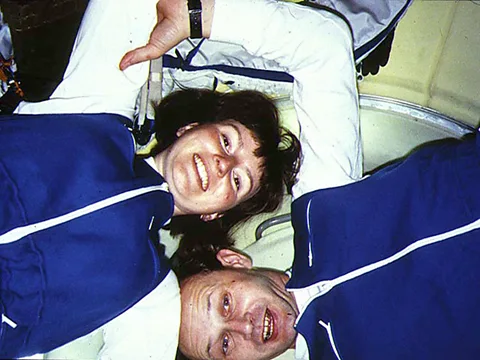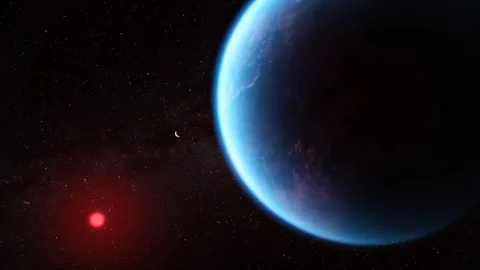The Enigmatic Smells of Outer Space and Old Windows Computers

Just like how old Windows computers sometimes emit a distinct, nostalgic smell when booting up, outer space also has its own peculiar aromas waiting to be discovered. When we imagine outer space, we think of its vastness, stars, and the mysteries of planets and galaxies. But what if space had smells? Scientists today are diving into the fascinating realm of cosmic aromas—investigating the “smells of outer space” from nearby planets to far-flung exoplanets hundreds of light years away. These scents offer more than just curiosity; they reveal clues about the chemical makeup of celestial bodies and even hint at where life might exist beyond Earth.
Jupiter’s Smell Compared to the Scent of Old Windows Computers
Jupiter, the largest planet in our solar system, is often described as a “stink bomb,” according to space scientist and fragrance designer Marina Barcenilla. Jupiter’s thick, multi-layered clouds each have distinct chemical compositions that create unique odors.
At the uppermost layer, the clouds are primarily composed of ammonia ice, emitting a pungent smell similar to cat urine. As you descend through the atmosphere, ammonium sulphide clouds produce a sulfurous odor, reminiscent of rotten eggs—one of the most infamous bad smells on Earth. Deeper layers may also contain organic compounds known as tholins, which emit faint petroleum-like and garlic notes.
Jupiter’s rich and complex smells provide a sensory window into its turbulent atmosphere, where crushing pressures and toxic clouds create an environment unlike any other.
The Science Behind Space Smells: How Old Windows Computers Help Us Detect Them
Before exploring more cosmic scents, it’s worth understanding what smells really are. Smell is an ancient sense, rooted in detecting chemicals in the environment. Even single-celled organisms 3.5 billion years ago could sense chemicals and react accordingly—a survival mechanism.

Humans have evolved a complex olfactory system that detects millions of chemical compounds through receptors in the nose. These receptors send signals to the brain, creating recognizable smells. This ability to detect chemicals has profound importance for survival, food identification, social communication, and emotional memory.
In space, though there is no air to carry odors in the traditional sense, scientists can detect chemical signatures remotely. Instruments analyze light spectra or sample materials brought back from missions to identify the chemical composition and recreate likely smells.
Astronauts’ Experiences and the Smell of Spacewalks: Insights from Old Windows Computers
In the confined environment of space stations, such as Mir or the International Space Station (ISS), smells are rare due to microgravity’s effect on air movement. Astronaut Helen Sharman recalls her time on Mir, where the atmosphere was mostly odorless unless you pressed your nose directly into food packets.

However, astronauts consistently report a distinct metallic or burnt smell after spacewalks. Descriptions include scents like charred meat, gunpowder, and burnt wiring. This phenomenon remains a mystery but is thought to arise from atomic oxygen interacting with materials on spacesuits. When astronauts re-enter the station, atomic oxygen reacts with oxygen inside, forming ozone—known for its sharp, metallic smell on Earth after thunderstorms.
The Odors of Dying Stars and Cosmic Dust
Beyond planets and moons, the smells of space extend to stars and interstellar clouds. When stars die, they release enormous energy and complex molecules called polycyclic aromatic hydrocarbons (PAHs), which linger in space for millions of years. On Earth, PAHs are associated with burning organic material, producing odors like burning plastic or mothballs.
Interstellar dust clouds, such as those in the Milky Way, combine unique scents described as a mix of ammonia and a strange “crazy ice cream” smell. These molecular clouds contain prebiotic chemicals—ethanol, methanol, and hydrogen sulphide—that are essential for the origins of life.
Titan and Other Cosmic Aromas
Saturn’s largest moon, Titan, has an atmosphere rich in organic molecules, producing odors of sweet almonds, petrol, and rotting fish. These varied scents come from complex chemical reactions in Titan’s thick nitrogen-rich atmosphere.
In stark contrast, the exoplanet HD 189733 b—a gas giant scorching hot and located 64 light years away—emits a “rotten egg” smell due to sulfur compounds in its atmosphere, making it an unpleasant destination for hypothetical visitors.
Detecting the Smells of Exoplanets: The James Webb Space Telescope
The James Webb Space Telescope (JWST) has revolutionized our ability to study the atmospheres of distant planets. By analyzing how starlight passes through exoplanet atmospheres, JWST identifies chemicals such as carbon dioxide, water vapor, and sulfur compounds.
One exciting discovery was the detection of carbon dioxide on WASP-39 b, a gas giant roughly 700 light years away. Although JWST cannot “smell” in the human sense, it provides detailed chemical fingerprints that scientists translate into potential aromas.
Searching for Life Through Smell: The Case of K2-18b
Among the thousands of exoplanets discovered, K2-18b stands out as a potential “hycean” world—an ocean-covered planet that could support life. In 2023, scientists, including astrophysicist Subhajit Sarkar, detected dimethyl sulphide (DMS) in K2-18b’s atmosphere, a chemical produced by marine life on Earth.
This possible biosignature suggests K2-18b might harbor an ocean teeming with life, releasing gases with the familiar smell of rotten cabbage. Although further research is necessary, this discovery highlights how the “smells of outer space” might help us find life beyond our planet.
Recreating Space Scents on Earth
Marina Barcenilla combines science and art by recreating the smells of space in the lab. At the Natural History Museum’s Space exhibition in London, visitors can experience scents like the rusty, dusty smell of Mars—a mixture of iron oxide and damp earth.

These recreated aromas help bridge the gap between scientific data and human experience, making the vastness of space more tangible.
The Greatest Smell: Returning Home to Earth
Despite the wonders of cosmic scents, astronauts often say nothing compares to the smell of Earth. Helen Sharman vividly remembers returning from space to the smell of fresh wormwood scrub in Kazakhstan—the scent of life and home.

This powerful sensory experience underlines how deeply our sense of smell connects us to our planet and why the exploration of space’s smells is both a scientific journey and a profoundly human one.
The Smells of Outer Space and Our Cosmic Connection
From the stinky clouds of Jupiter to the sweet odors of Titan and the mysterious metallic tang of spacewalks, the smells of outer space open a new frontier in understanding our universe. These aromas reveal the chemical makeup of planets, stars, and cosmic dust, while also offering tantalizing clues about the possibility of extraterrestrial life.
As technology advances, we will continue to uncover more about these scents—whether through telescopes, sample return missions, or the creativity of scent designers. Ultimately, the smells of outer space connect us to the cosmos in a sensory way, bridging the gap between human experience and the vast mysteries beyond our world.




